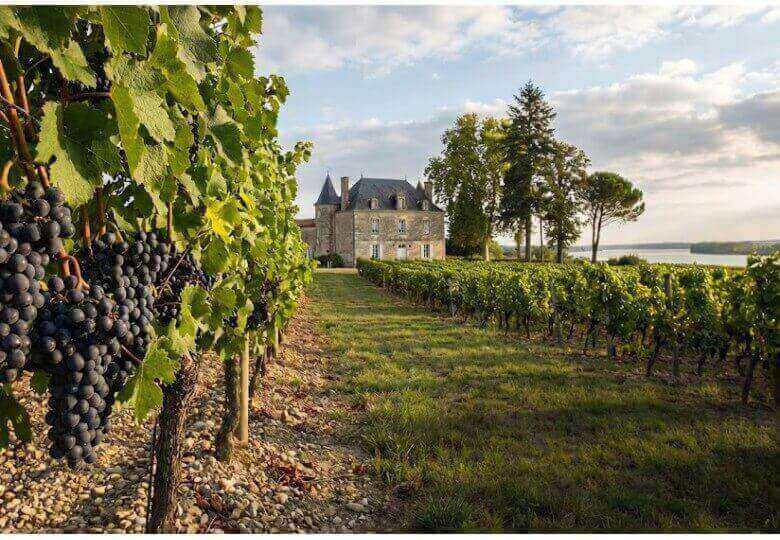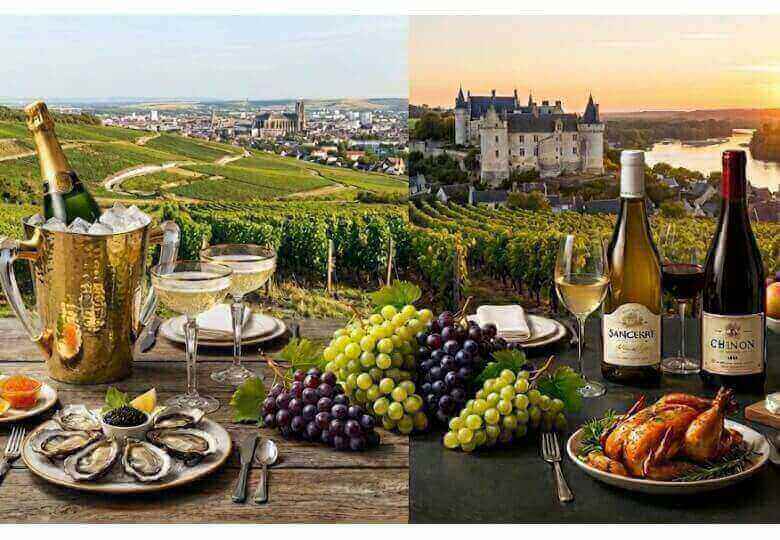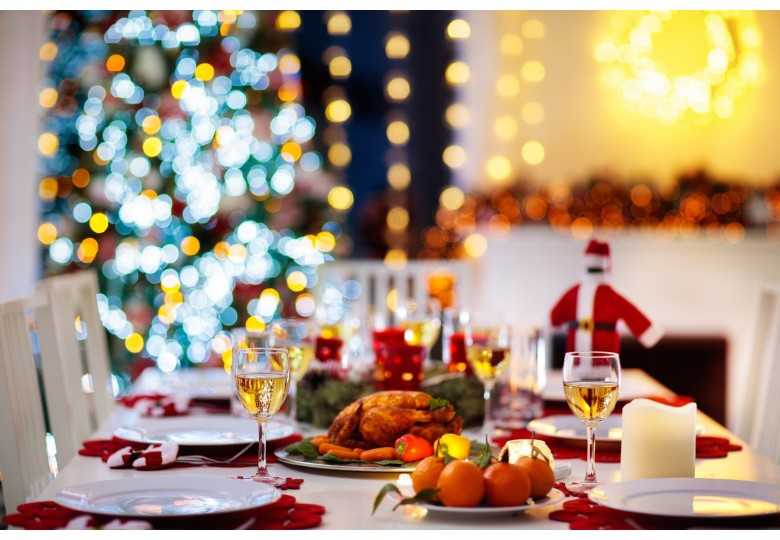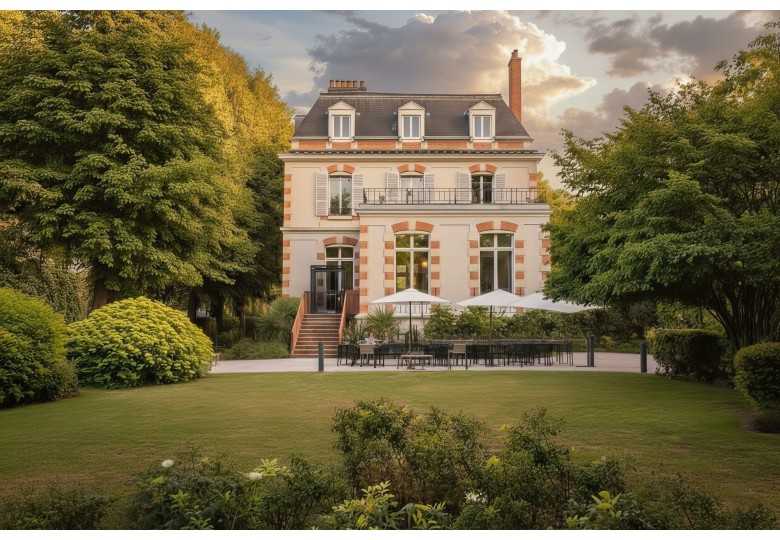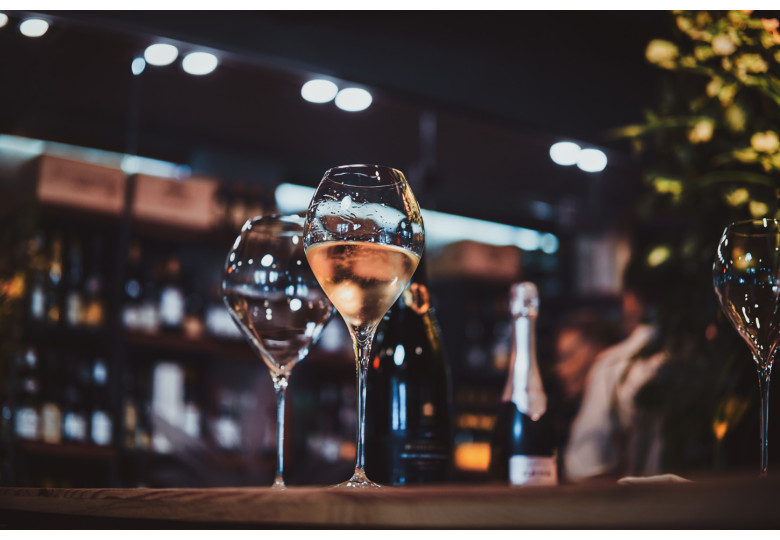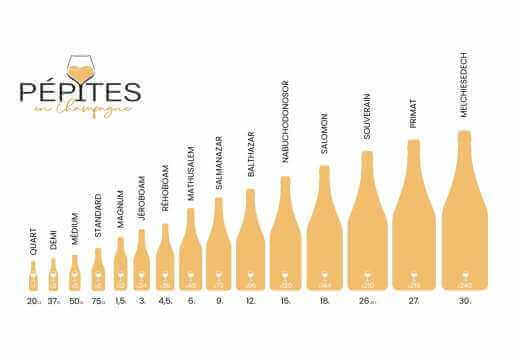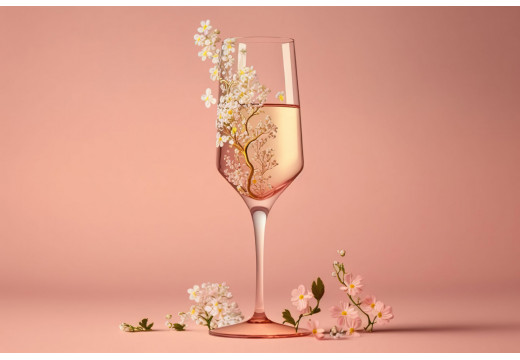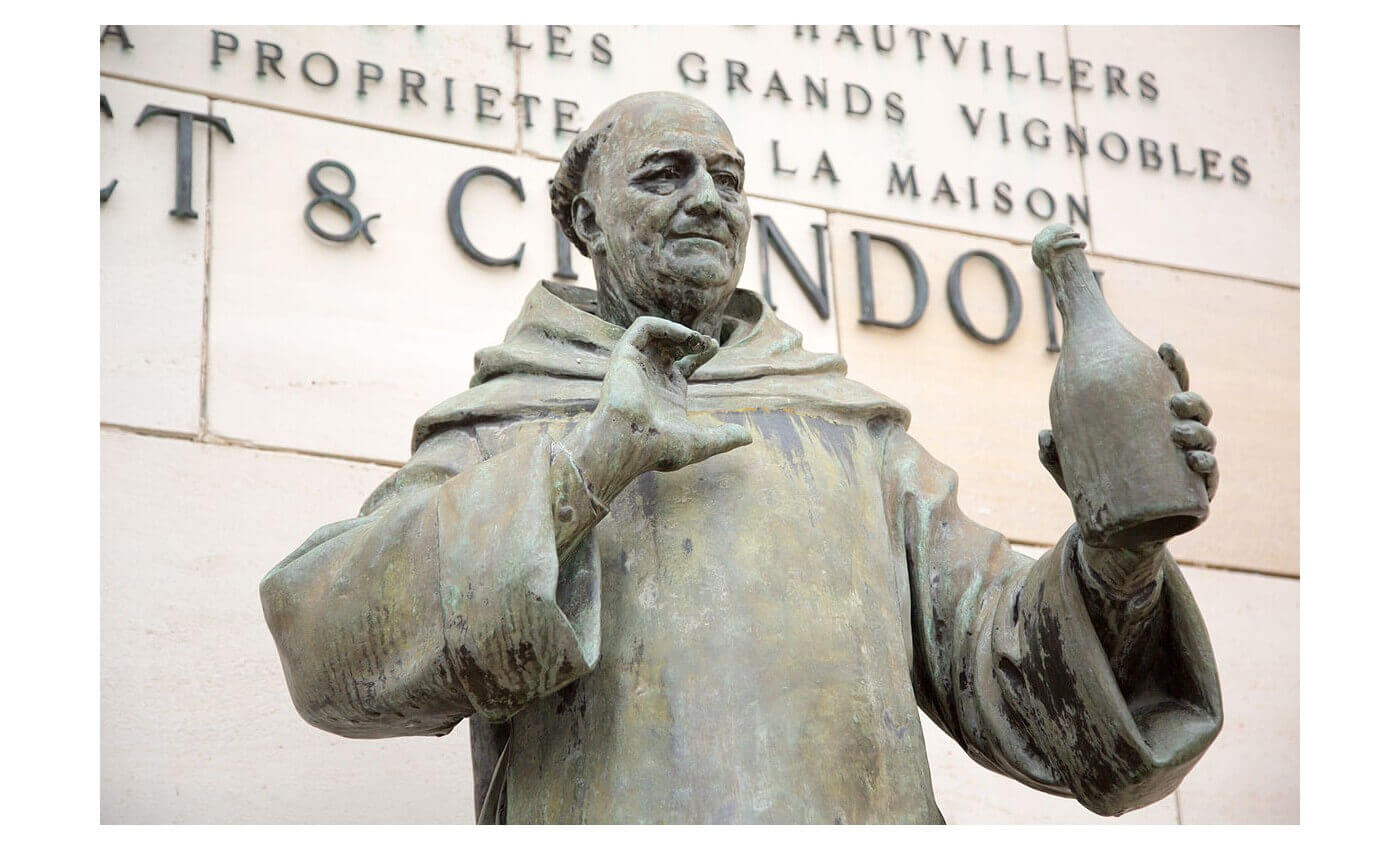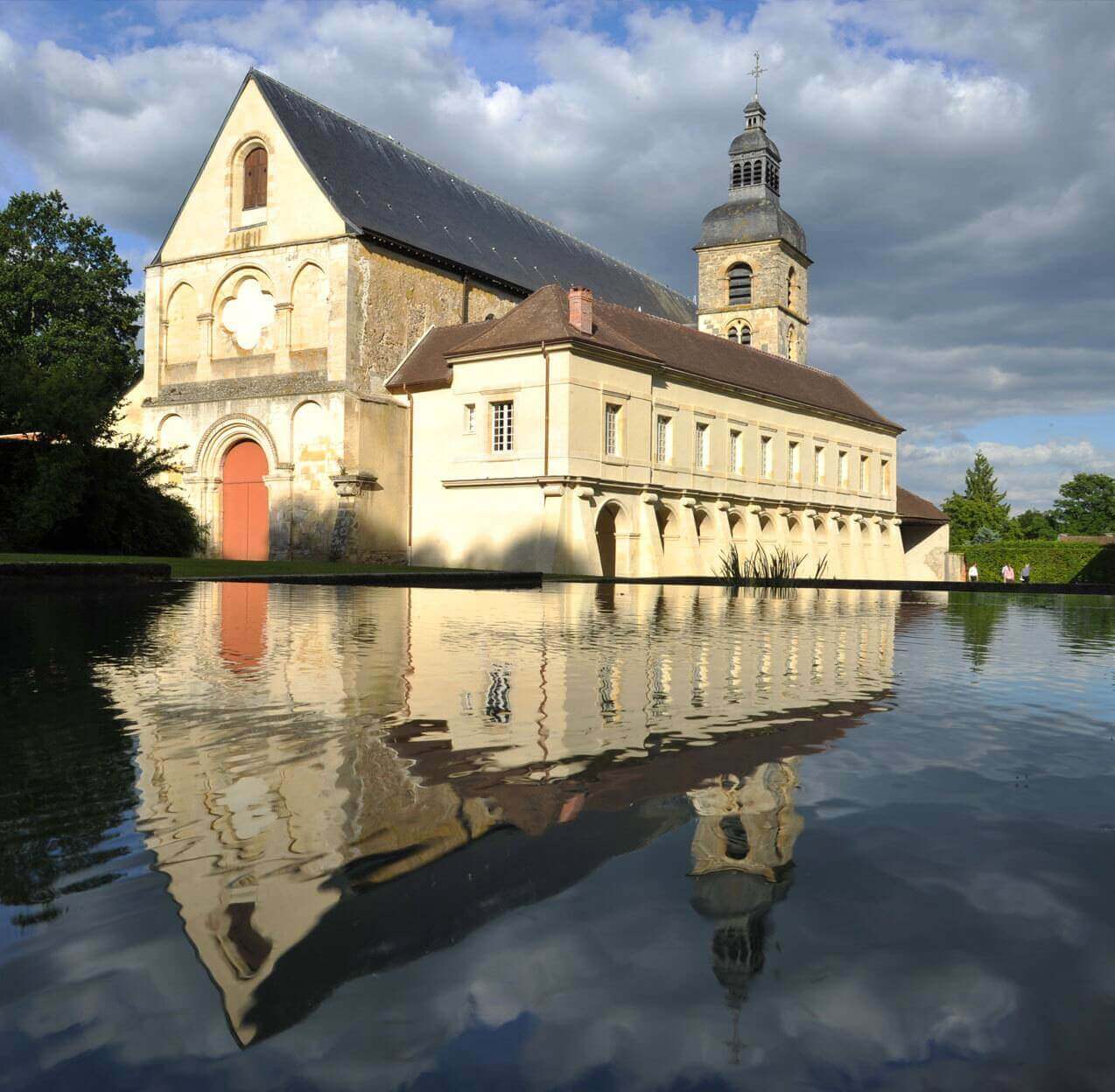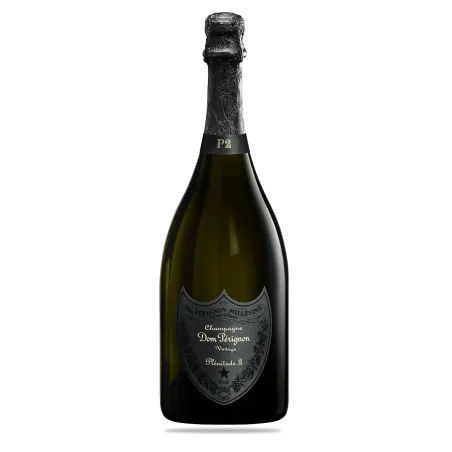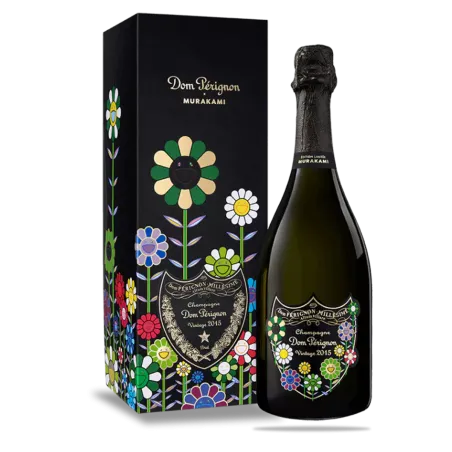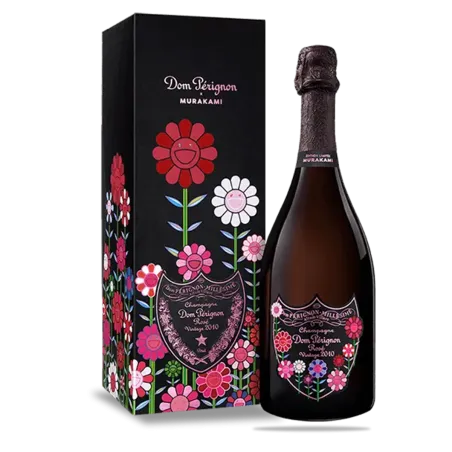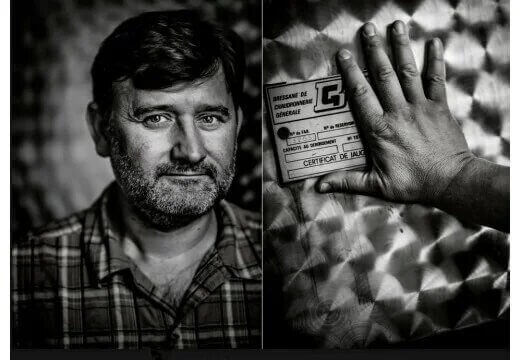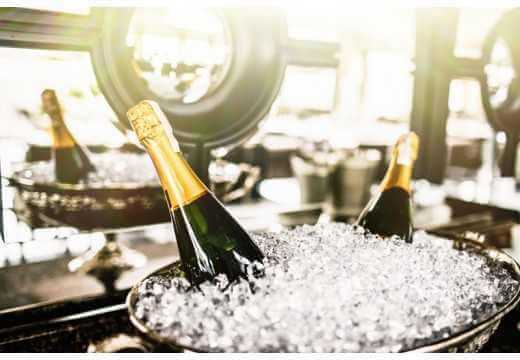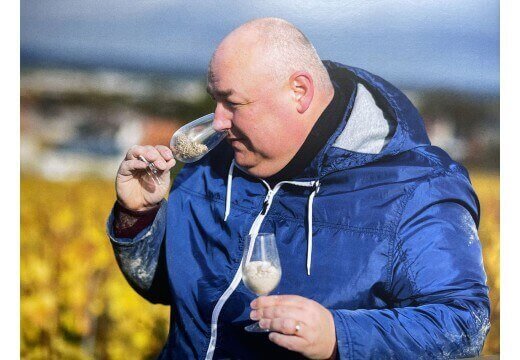Amends his vineyards by "taking care to add manure and new earth from time to time, but avoiding excess: too much would make the wine soft and bland, and easy to grease", by taking care to use only "cow manure, because it is less hot than horse manure" and by having stores prepared where "a bed of manure and a bed of new earth are mixed, leaving the whole to rot well during the winter".
He prunes his vines wisely, not like "certain winegrowers who try to over-manage their vines, preferring large quantities to good quality, which are incompatible", and according to tradition, "only starts pruning on the eighteenth of February, and never when there is frost, or when it freezes hard, especially in the evening, or when it rains, the best pruning being in March".
From time to time, he "pulls up the weeds that grow in the vineyards. And if there are any spades, which are harmful to plants, he has them peeled, put in bags and burned a little way from the vines, burying the ashes.
With the return of spring, he "spades the vines in March and provides himself with workmen with good, large hoes to be able to work the soil well, to dig in and straighten the vines, to separate those that are too close together" and "to put a stile (probably made of quarter or heart oak, given the considerable means at his disposal) at each vine, to support it".
After fichage, Dom Pierre had the vines ploughed, trimmed (to concentrate the sap in the useful part of the vine, by removing the ends of the shoots), de-budded (to remove all superfluous growth) and tied to the stiles.
A second ploughing operation is carried out after tying. "It is used to remove the steps that have trodden on the vines by trimming and tying them, which would make the soil too hard if this work were neglected. And it's also very necessary to trim the vines about three weeks after they've been tied, as this benefits the grapes, which are still tender."
In August, he has the vines "ploughed and trimmed of any brush or greenery that may have grown since the second trimming, the latter being necessary to ensure that the grapes ripen properly. It gives quality to the wine, prepares the soil to receive the warmth of the sun, and cleanses it of weeds and other vermin
Then finally comes harvest time, generally at the end of September, during which Dom Pierre has had to endure the constraints imposed by picking black grapes when they are intended to give a colorless juice. These constraints are described in detail by the anonymous author of the treatise entitled Manière de cultiver la Vigne et de faire le Vin en Champagne et ce qu'on peut imiter dans les autres Provinces, pour perfectionner les Vins :
"We don't pick grapes indiscriminately, nor at all hours of the day, but we choose the ripest and most azure ones. The best grapes are those whose berries are not tightly packed, and which are even spread out a little, because they ripen perfectly. These make the most exquisite wine. Those that are tightly packed are never fully ripe. They are cut with a small, curved knife, as cleanly and with as little tail as possible, and placed very gently in the hosts, so as not to crush any of the grapes.
"In wet years, you have to be very careful not to put any spoiled grapes in the hosts. And in any weather, you have to be very careful to cut off any grapes that are rotten, crushed or completely dry. But the grapes must never be de-stemmed. We start harvesting half an hour after sunrise. And if the sun is cloudless, and a little hot around nine or ten o'clock, you stop harvesting, and make your "sac", which is a cuvée, because after this hour, the grapes being heated, the wine would be colored or tinted red, and remain too smoky.
"When the presses are close to the vines, it's easier to prevent the wine from turning color, because the grapes are gently and cleanly carried to them in a short time. But when they are two or three leagues away, as we are obliged to put the harvest in barrels [...] that are constantly being taken away on carts, so that they can be pressed as soon as possible, we can hardly avoid the wine being colored, except in wet and cold years. It is a certain principle that when the grapes are cut, the sooner they are pressed, the whiter and more delicate the wine, because the longer the liquor remains in the marc, the redder it becomes. Therefore, it is extremely important to hasten the picking of the grapes and the pressing."
Let's turn now to Dom Pierre's winemaking and trading activities. As Patrick Demouy, senior lecturer in medieval history at the University of Reims, is wont to argue to anyone who broaches the subject:
"No one in the world expected wine from a depopulated abbey whose cellars and wine presses had also fallen into ruin just a few years earlier. With the equipment restored, we could now offer our customers an esteemed wine. But it still had to be produced, and a breakthrough achieved in a world where all the niches seemed firmly occupied, in particular the two most important ones, the wealthy customers of the first two orders who could afford the luxury of drinking it: the clergy and the nobility, to which we'll add the upper bourgeoisie."
I'd like to add the following comment. It's important to bear in mind that we're living in a closed economy, and that in these circumstances, trade is above all a matter of personal relationships. From generation to generation, a family buys its wine from the same owner and his descendants, and acquires the product of a "clos", which undergoes the climatic variations inherent in each year and a vinification that is more a matter of nose than knowledge.
In those days, word of mouth worked wonders: the bishop drank at the canon's, the prince at the marquis's; the word "competition" was not yet part of the vocabulary. The clerical lobby, firmly established in the region with the Abbey of Saint-Thierry northwest of Reims and the Abbey of Saint-Basle in Verzy, and a major supplier of scattered wines, slyly weighed in on purchases. Given this state of affairs, Dom Pierre's only hope of salvation was to bring to market a much better, even different product of consistent quality. To achieve this, he was going to tactfully shake up nature, before whose whims winegrowers kneel. He dares to break the sacrosanct trinity of harvest, vinification and the hand of God.
Amends his vineyards by "taking care to add manure and new earth from time to time, but avoiding excess: too much would make the wine soft and bland, and easy to grease", by taking care to use only "cow manure, because it is less hot than horse manure" and by having stores prepared where "a bed of manure and a bed of new earth are mixed, leaving the whole to rot well during the winter".
He prunes his vines wisely, not like "certain winegrowers who try to over-manage their vines, preferring large quantities to good quality, which are incompatible", and according to tradition, "only starts pruning on the eighteenth of February, and never when there is frost, or when it freezes hard, especially in the evening, or when it rains, the best pruning being in March".
From time to time, he "pulls up the weeds that grow in the vineyards. And if there are any spades, which are harmful to plants, he has them peeled, put in bags and burned a little way from the vines, burying the ashes.
With the return of spring, he "spades the vines in March and provides himself with workers with good, large hoes to be able to dig the soil well, dig in and straighten the vines, separate those that are too close to each other" and "put up a stile (presumably quartered)"
or oak heartwood, given the considerable resources available) to each vine, to support it".
After fichage, Dom Pierre had the vines ploughed, trimmed (to concentrate the sap in the useful part of the vine, by removing the ends of the shoots), de-budded (to remove all superfluous growth) and tied to the stiles.
A second ploughing operation is carried out after tying. "It is used to remove the steps that have trodden on the vines by trimming and tying them, which would make the soil too hard if this work were neglected. And it's also very necessary to trim the vines about three weeks after they've been tied, as this benefits the grapes, which are still tender."
In August, he has the vines "ploughed and trimmed of any brush or greenery that may have grown since the second trimming, the latter being necessary to ensure that the grapes ripen properly. It gives quality to the wine, prepares the soil to receive the warmth of the sun, and cleanses it of weeds and other vermin
Then finally comes harvest time, generally at the end of September, during which Dom Pierre has had to endure the constraints imposed by picking black grapes when they are intended to give a colorless juice. These constraints are described in detail by the anonymous author of the treatise entitled Manière de cultiver la Vigne et de faire le Vin en Champagne et ce qu'on peut imiter dans les autres Provinces, pour perfectionner les Vins :
"We don't pick grapes indiscriminately, nor at all hours of the day, but we choose the ripest and most azure ones. The best grapes are those whose berries are not tightly packed, and which are even spread out a little, because they ripen perfectly. These make the most exquisite wine. Those that are tightly packed are never fully ripe. They are cut with a small, curved knife, as cleanly and with as little tail as possible, and placed very gently in the hosts, so as not to crush any of the grapes.
"In wet years, you have to be very careful not to put any spoiled grapes in the hosts. And in any weather, you have to be very careful to cut off any grapes that are rotten, crushed or completely dry. But the grapes must never be de-stemmed. We start harvesting half an hour after sunrise. And if the sun is cloudless, and a little hot around nine or ten o'clock, you stop harvesting, and make your "sac", which is a cuvée, because after this hour, the grapes being heated, the wine would be colored or tinted red, and remain too smoky.
"When the presses are close to the vines, it's easier to prevent the wine from turning color, because the grapes are gently and cleanly carried to them in a short time. But when they are two or three leagues away, as we are obliged to put the harvest in barrels [...] that are constantly being taken away on carts, so that they can be pressed as soon as possible, we can hardly avoid the wine being colored, except in wet and cold years. It is a certain principle that when the grapes are cut, the sooner they are pressed, the whiter and more delicate the wine, because the longer the liquor remains in the marc, the redder it becomes. Therefore, it is extremely important to hasten the picking of the grapes and the pressing."
Let's turn now to Dom Pierre's winemaking and trading activities. As Patrick Demouy, senior lecturer in medieval history at the University of Reims, is wont to argue to anyone who broaches the subject:
"No one in the world expected wine from a depopulated abbey whose cellars and wine presses had also fallen into ruin just a few years earlier. With the equipment restored, we could now offer our customers an esteemed wine. But it still had to be produced, and a breakthrough achieved in a world where all the niches seemed firmly occupied, in particular the two most important ones, the wealthy customers of the first two orders who could afford the luxury of drinking it: the clergy and the nobility, to which we'll add the upper bourgeoisie."
I'd like to add the following comment. It's important to bear in mind that we're living in a closed economy, and that in these circumstances, trade is above all a matter of personal relationships. From generation to generation, a family buys its wine from the same owner and his descendants, and acquires the product of a "clos", which undergoes the climatic variations inherent in each year and a vinification that is more a matter of nose than knowledge.
In those days, word of mouth worked wonders: the bishop drank at the canon's, the prince at the marquis's; the word "competition" was not yet part of the vocabulary. The clerical lobby, firmly established in the region with the Abbey of Saint-Thierry northwest of Reims and the Abbey of Saint-Basle in Verzy, and a major supplier of scattered wines, slyly weighed in on purchases. Given this state of affairs, Dom Pierre's only hope of salvation was to bring to market a much better, even different product of consistent quality. To achieve this, he was going to tactfully shake up nature, before whose whims winegrowers kneel. He dares to break the sacrosanct trinity of harvest, vinification and the hand of God.
Cellarer at Hautvillers Abbey, Dom Pérignon (now blind), tastes grapes from different crus
to compose his Cuvée. Genius of blending Champagne's crus and grape varieties,
its concepts are still applied today by the Grandes Champagne brands.
The idea is simple, as always: to blend grapes or wines sometimes produced by different grape varieties on different terroirs. However, as far back as the 16th century, it was common practice to mix black and white grapes in the same vineyard, with the bunches gathered in the same press. But a century later, this practice was considered harmful.
Dom Pierre's innovation consisted in combining grapes from different origins before pressing, rather than from a single vineyard, either because they had been harvested in different parts of the abbey estate, or because they came from deliveries covering the tithe owed by several villages in the surrounding area (rather than blending musts or wines, a method later used in Champagne). He thus had a very wide choice of "crus", which he carefully blended in the monastery's presses, in order to harmonize or sublimate their qualities and reduce their defects. It was an ingenious idea, and the source of Champagne's sparkling wine fortunes.
Père Pérignon, a Benedictine monk from Hautvillers sur Marne," we read in interview XIV of Spectacle de la Nature ou Entretiens sur les particularités de l'Histoire naturelle qui ont paru les plus propres à rendre les Jeunes Gens curieux, et à leur former l'esprit de l'abbé Noël-Antoine Pluche, who took his inspiration from a memoir written for the occasion by Canon Jean Godinot, based on a treatise written by an anonymous author on the Manière de cultiver la Vigne et défaire le Vin en Champagne et ce qu'on peut imiter dans les autres Provinces, pour perfectionner les Vins, was the first to apply himself successfully to matching grapes from different vines in this way. Before his method became widespread, people spoke only of the wine of Pérignon, or Hautvillers".
In a factum drawn up by the inhabitants of Pierry, who were at the time in dispute with the monks of Hautvillers Abbey, the monks were criticized for hindering the handling of declinables, "when they had the inestimable advantage, which we owe to Father Pérignon, their author, of being able to mix Pierry grapes with those from Hautvillers on the press, and by this means, according to the same Father Pérignon, to give their wine yet another degree of excellence".
In 1783, Dom Nicolas Le Long, another Benedictine monk from Hautvillers, wrote in his Histoire ecclésiastique et civile du Diocèse de Laon:
"The white wines of Hautvillers owe their renown to Dom Pérignon, who died in his seventies in 1715. Through his fine taste, this monk introduced the Champenois to the art of blending wines and giving them a delicacy that was unknown before him".
Here, according to the treatise left to us by Brother Pierre, his pupil and successor, is how the father prosecutor proceeded:
"Father Pérignon didn't taste the grapes in the vineyard, even though he went there every day when they were approaching maturity. Instead, he had grapes brought in from the vines he intended to use to make the first cuvée, and only tasted them the next morning, after letting them air out on his window overnight, to judge their taste. Depending on the year, not only did he compose his cuvées according to this taste, but also according to the disposition of the weather, early, late, cold, rainy years and according to the vines well or poorly supplied with leaves; all these events served him as rules for the composition of his so distinguished cuvées."
This reputation as a fine wine taster is confirmed by Dom Jean François, in the article he devotes to him in his Bibliothèque générale des écrivains de l'ordre de Saint-Benoît, patriarche des moines d'Occident:
"This unique man preserved into his decrepit old age a delicacy of taste so singular that he could discern without mistaking, when tasting a grape, the canton that had produced it. He would be presented with a basket of grapes collected from all the vineyards in his territory and that of Cumières; he would taste them, arrange them according to the soil from which they came, and confidently mark the species that should be combined to obtain the best quality wine, and this in relation to the heat or humidity of summer and autumn."
Although Father Procurator was a subtle oenologist, he did not invent blending. All abbeys produced blended wines through the payment of tithes on vines in kind. The decimator collected the grapes "au permis du clos". Dom Pierre brought this blending to perfection, as the reputation of his wines testifies. He did it for the prosperity of his community, and no doubt for the glory of God. All work well done, out of love, takes the form of praise to the Creator.
With a heritage strengthened by a thousand years of bequests, the abbey estate is also a collection of diverse assets spread over a vast territory.
As dispersion breeds anarchy, Dom Pierre's approach is one of method. No secret weapon, just summary theses providing obvious solutions to questions deemed unsolvable. A lawyer, an accountant, a day-to-day manager, and too overworked to waste his time in the chatter that so many experts indulge in, the Father Procurator of Hautvillers translates into Cartesian form - statistics, meticulous accounts, research into cause and effect, studies of climatic variations and their influence on the different terroirs, sketches of an experimental approach, etc. - the infused science and inspiration of the old cellar masters. Within his means, he demystified wine to bring it closer to science, and succeeded so well that Champagne wines took a clear lead over all others in this field, being the first to emerge from empiricism.
The inventory of the Hautvillers estates shows that he had a large number of tithes at his disposal, enabling him to blend and market a considerable quantity of wine. However, he did not do so, collecting their value in money in order to extend his own estate (1663: 21 arpents, or 10 and a half hectares of poorly tended vines -1712: 48 arpents, or 24 hectares divided into 68 parcels of vines with improved soil). The average harvest was 300 hl, which explains the wine's high prices in the early days of its renown.
Figures rather than words (though!...) testify to its success. Whereas red wine produced in the same region sells for no more than 200 livres a bottle (around 400 l in Champagne), the abbey's wine fetches 700 livres and even peaks, in 1691, at 950 livres, suffocating the Intendant of Champagne, who speaks of "outrageous prices which, apparently, will not last long". And as is often the case in such cases, administrative forecasts are contradicted by the facts, since in 1700, the famous Spartan wine merchant, Adam Bertin du Rocheret, wrote to his client the Count of Artaignan: "The good and most excellent wines are selling for 400, 450, 500, 550 livres a bottle [...] I forgot to tell you that, after these high wine prices, those of the monks of Ovillers (Hautvillers) and Saint-Pierre (Pierry) are at 800 to 980 livres...". It's true that towards the end of Dom Pierre's life, prices fell, but we mustn't forget that these were the darkest years in the reign of Louis XIV, who, like many Champagne wine lovers, was forced to sell his gold and vermeil crockery in the face of the expenses incurred by incessant wars. In 1712, however, the price of the first cuvée from Hautvillers Abbey remained fixed at 750 livres a cue.
But does this give a religious the right to behave like a tireless servant of the golden calf? Certainly, the rule of Saint Benedict prescribes selling the products of the monastery "a little more cheaply than the seculars do, so that God may be glorified in everything". Isn't Hautvillers' policy just the opposite? Doubtless, but the Father Procurator had a ready-made answer, which René Gandilhon found unstoppable: "Out of solidarity with other producers, he cannot lower his prices". In fact, Dom Pierre knows how to make wine. He sells it even better.
For, in addition to his mercantile skills, Hautvillers' procuratorial father is endowed with a knack for interpersonal communication that naturally also works wonders in a field closer to wine than one might think: negotiation, the sister of blending, and here too, it's necessary to know how to compose. "Dom Pérignon"He proved to be a peacemaker, whether by arranging for the businessman of the Notre-Dame congregation in Nancy or the fathers of the Compagnie de Jésus to support the Congrégation de Saint-Vanne, or by facilitating delicate negotiations with the English court
Maréchal de Montesquieu, a convinced epicurean, paid little heed to these "states of mind", writing to Adam Bertin du Rocheret on November 9, 1715: "M de Puysieulx, who arrived yesterday, told me that Father Pérignon had died, and that he had been much talked about during his lifetime. [...] On the first wines of this abbey, think of me because frankly, they're the best." A delicious funeral oration! And yet Dom Pierre remains the only hero that, after several millennia of emptiness, winemakers everywhere can pit against ancient mythology, Dyonisos and Bacchus.


